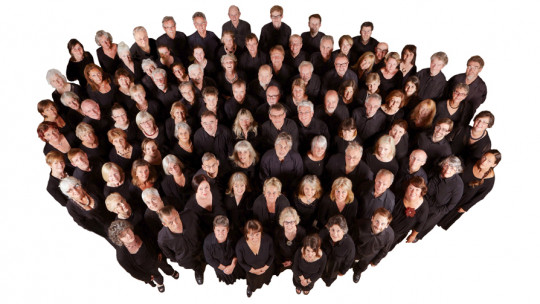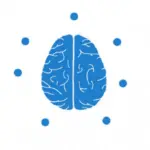
A set of interdisciplinary contributions that aim to study the characteristics that define systems is known as “systems theory”, that is, entities made up of interrelated and interdependent components.
One of the first contributions to this field was Ludwig von Bertalanffy’s general systems theory This model has had a great influence on the scientific perspective and continues to be a fundamental reference in the analysis of systems, such as families and other human groups.
Bertalanffy’s systems theory
German biologist Karl Ludwig von Bertalanffy (1901-1972) proposed his general systems theory in 1928 as a broad tool that could be shared by many different sciences.
This theory contributed to the emergence of a new scientific paradigm based on the interrelationship between the elements that form systems. Previously, it was considered that systems as a whole were equal to the sum of their parts, and that they could be studied from the individual analysis of their components; Bertalanffy questioned such beliefs.
Since it was created, general systems theory has been applied to biology, psychology mathematics, computer science, economics, sociology, politics and other exact and social sciences, especially within the framework of the analysis of interactions.
Defining the systems
For this author, the concept of “system” can be defined as a set of elements that interact with each other These are not necessarily humans, or even animals, but they can also be computers, neurons or cells, among many other possibilities.
Systems are defined by their structural characteristics, such as the relationship between components, and functional characteristics; For example, in human systems the elements of the system pursue a common goal. The key aspect of differentiation between systems is whether they are open or closed to the influence of the environment in which they are located.
System types
Bertalanffy and other later authors have defined different types of system based on structural and functional characteristics Let’s see what the most important classifications are.
1. System, suprasystem and subsystems
Systems can be divided based on their level of complexity. The different levels of a system interact with each other, so that they are not independent of each other.
If we understand a system as a set of elements, we speak of “subsystems” to refer to such components; For example, A family is a system and each individual in it is a subsystem differentiated. The suprasystem is the external environment to the system, in which it is immersed; in human systems it is identifiable with society.
2. Realities, ideals and models
Depending on their entity, systems can be classified as real, ideal and models. The real systems are those that physically exist and that can be observed, while ideal systems are symbolic constructions derived from thought and language. Models are intended to represent real and ideal characteristics.
3. Natural, artificial and compounds
When a system depends exclusively on nature, such as the human body or galaxies, we refer to them as a “natural system.” On the other hand, artificial systems are those that arise as a consequence of human action; Within this type of system we can find vehicles and companies, among many others.
The composite systems combine natural and artificial elements Any physical environment modified by people, such as towns and cities, is considered a composite system; Of course, the proportion of natural and artificial elements varies in each specific case.
4. Closed and open
For Bertalanffy, the basic criterion that defines a system is the degree of interaction with the suprasystem and other systems Open systems exchange matter, energy and/or information with the environment that surrounds them, adapting to it and influencing it.
On the other hand, closed systems are theoretically isolated from environmental influences; In practice, we speak of closed systems when they are highly structured and feedback is minimal, since no system is completely independent of its suprasystem.
Properties of open systems
Although the properties of closed systems have also been described, those of the open ones are more relevant for the social sciences because human groups form open systems. This happens, for example, in families, in organizations and in nations.
1. Totality or synergy
According to the principle of synergy, the operation of the system cannot be understood only from the sum of the elements that compose it but rather the interaction between these generates a qualitatively different result.
2. Circular causality or reciprocal codetermination
The action of the different members of a system influences that of the rest, so that the behavior of none of them are independent of the system as a whole Furthermore, there is a tendency toward repetition (or redundancy) of operating patterns.
3. Equifinality
The term “equifinality” refers to the fact that several systems can reach the same final state even if their conditions are initially different. Consequently, it is inappropriate to look for a single cause to explain this development.
4. Equicausality
Equicausality is opposed to equifinality: Systems that start out the same can develop differently depending on the influences they receive and the behavior of their members. Thus, Bertalanffy considered that when analyzing a system one must focus on the present situation and not so much on the initial conditions.
5. Limitation or stochastic process
Systems tend to develop certain sequences of operation and interaction between members. When this happens, the probability of responses different from those that are already consolidated decreases; This is known as “limitation.”
6. Relationship rule
The relationship rules determine which are the priority interactions between system components and which ones should be avoided. In human groups the relationship rules are normally implicit.
7. Hierarchical arrangement
The principle of hierarchical ordering applies both to the members of the system and to specific behaviors. It consists of some elements and functions having more weight than others, following a vertical logic.
8. Teleology
The development and adaptation of the system, or teleological process, occurs from the opposition of homeostatic forces (that is, focused on maintaining the current balance and state) and morphogenetic (focused on growth and change).








